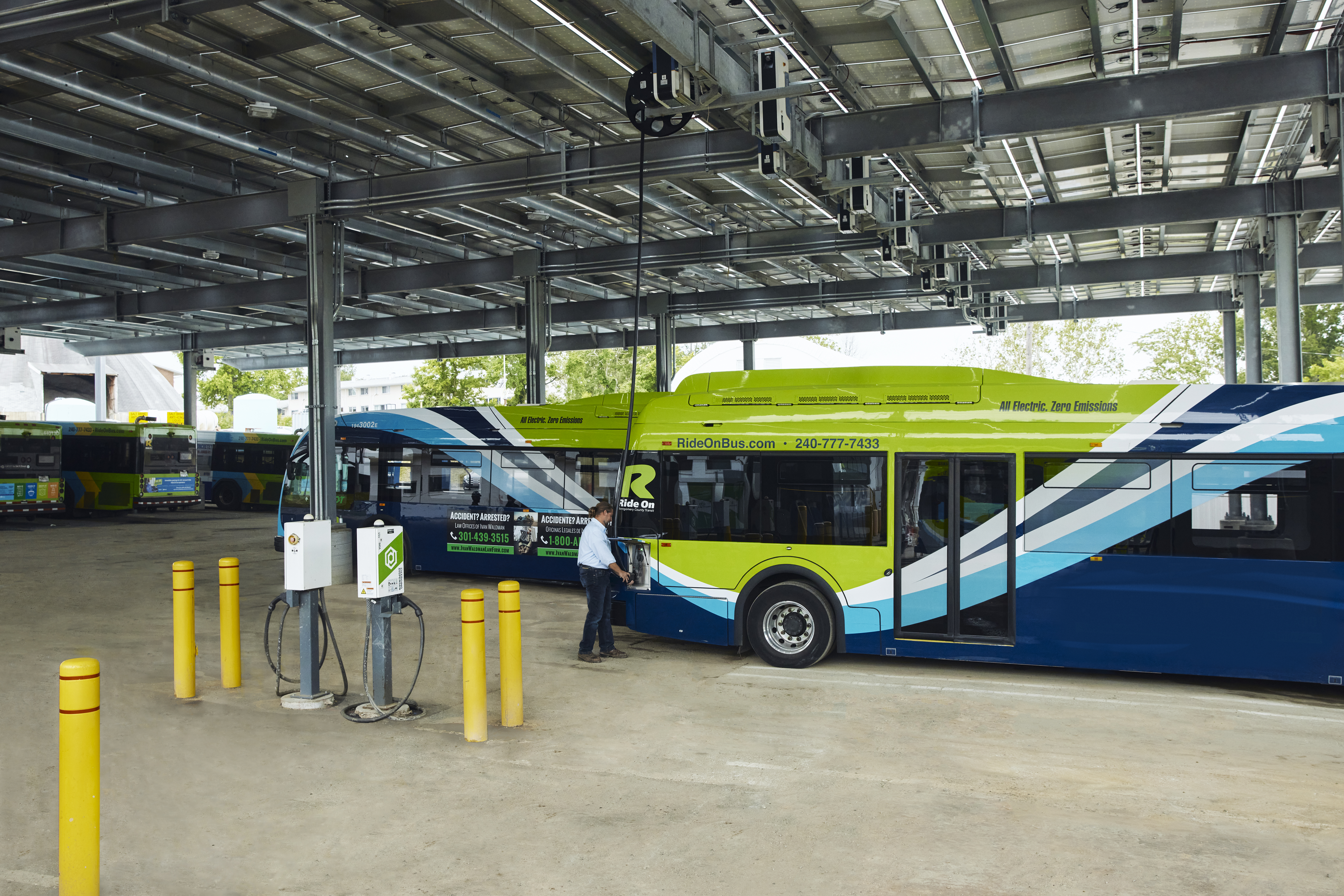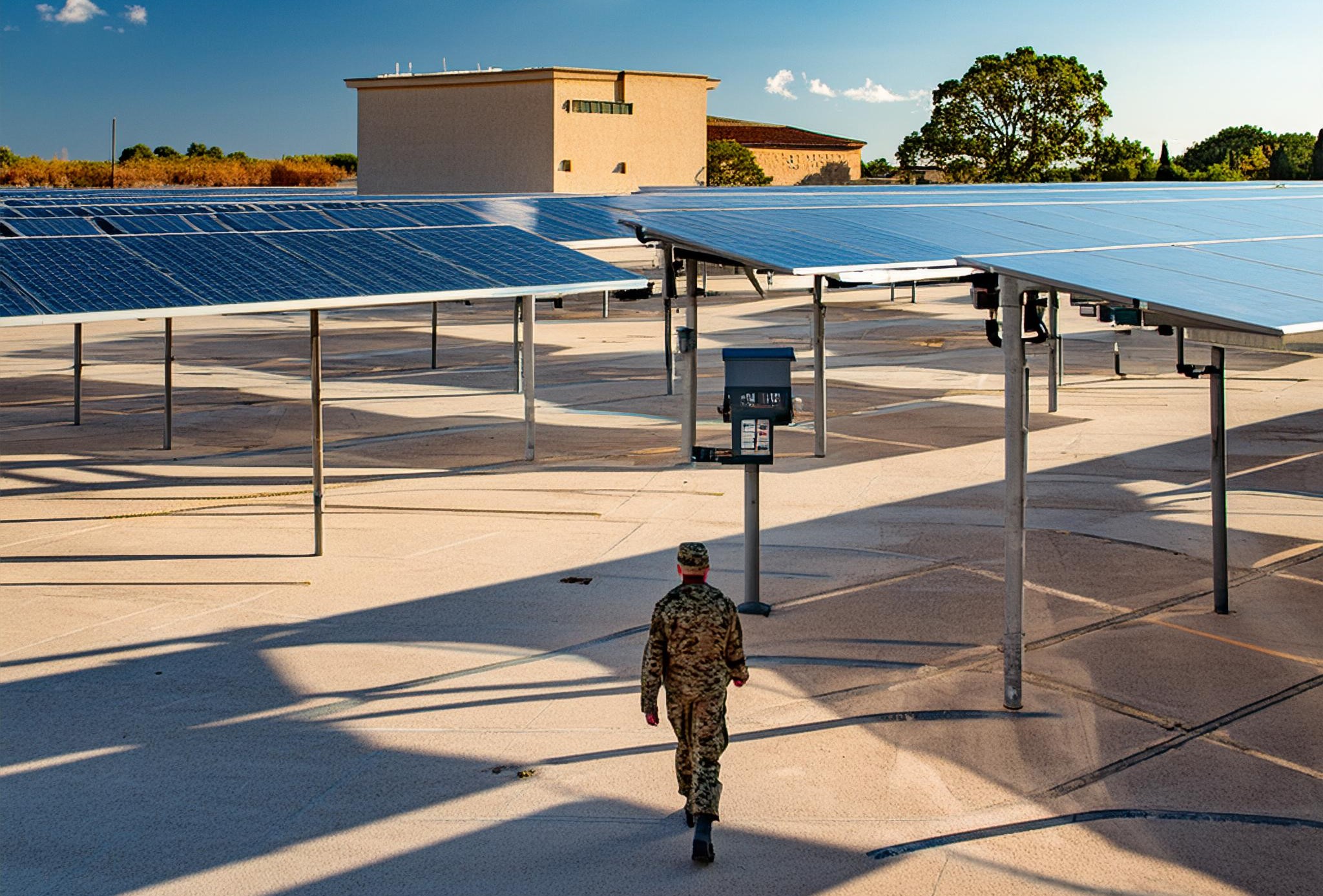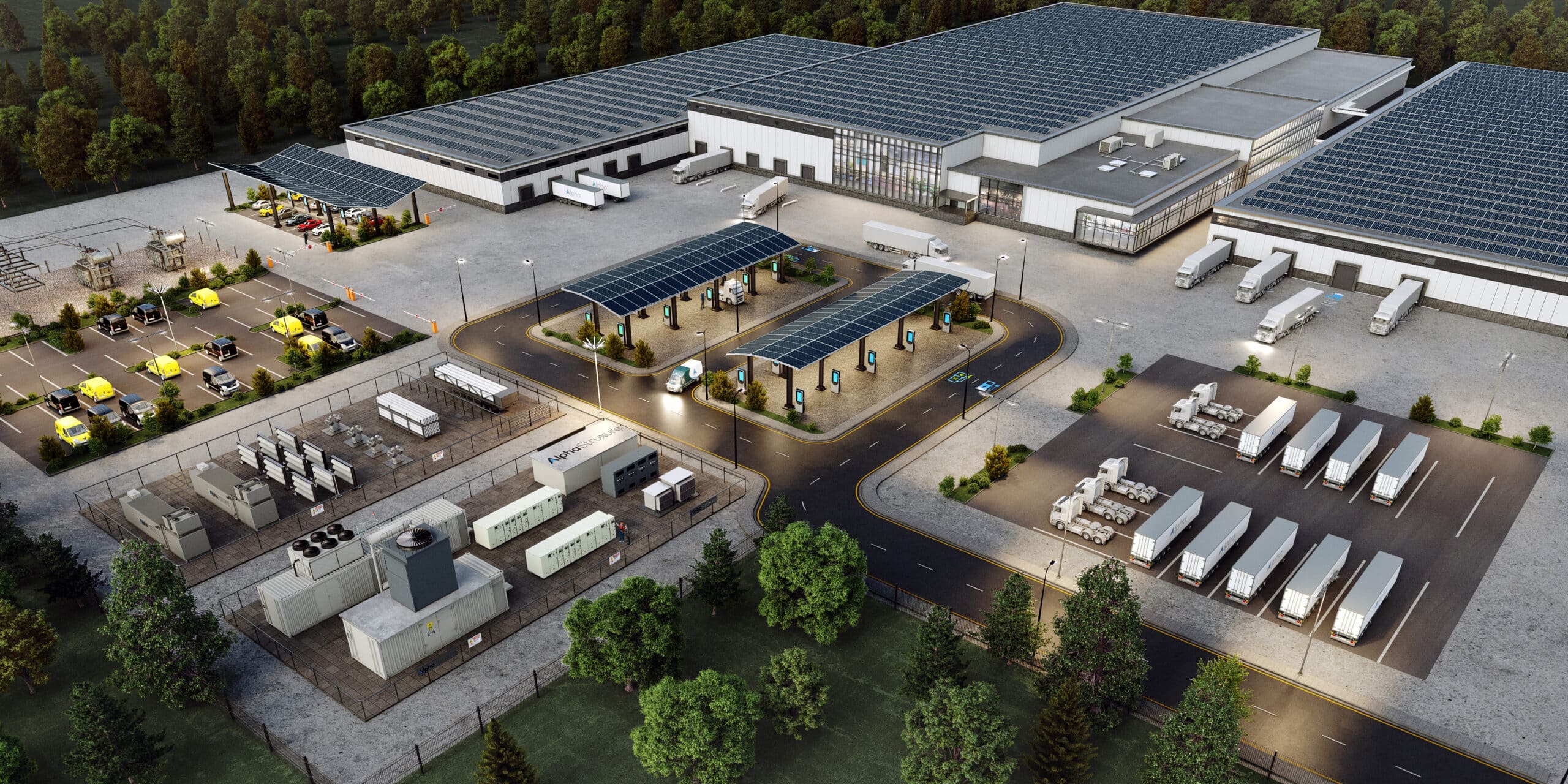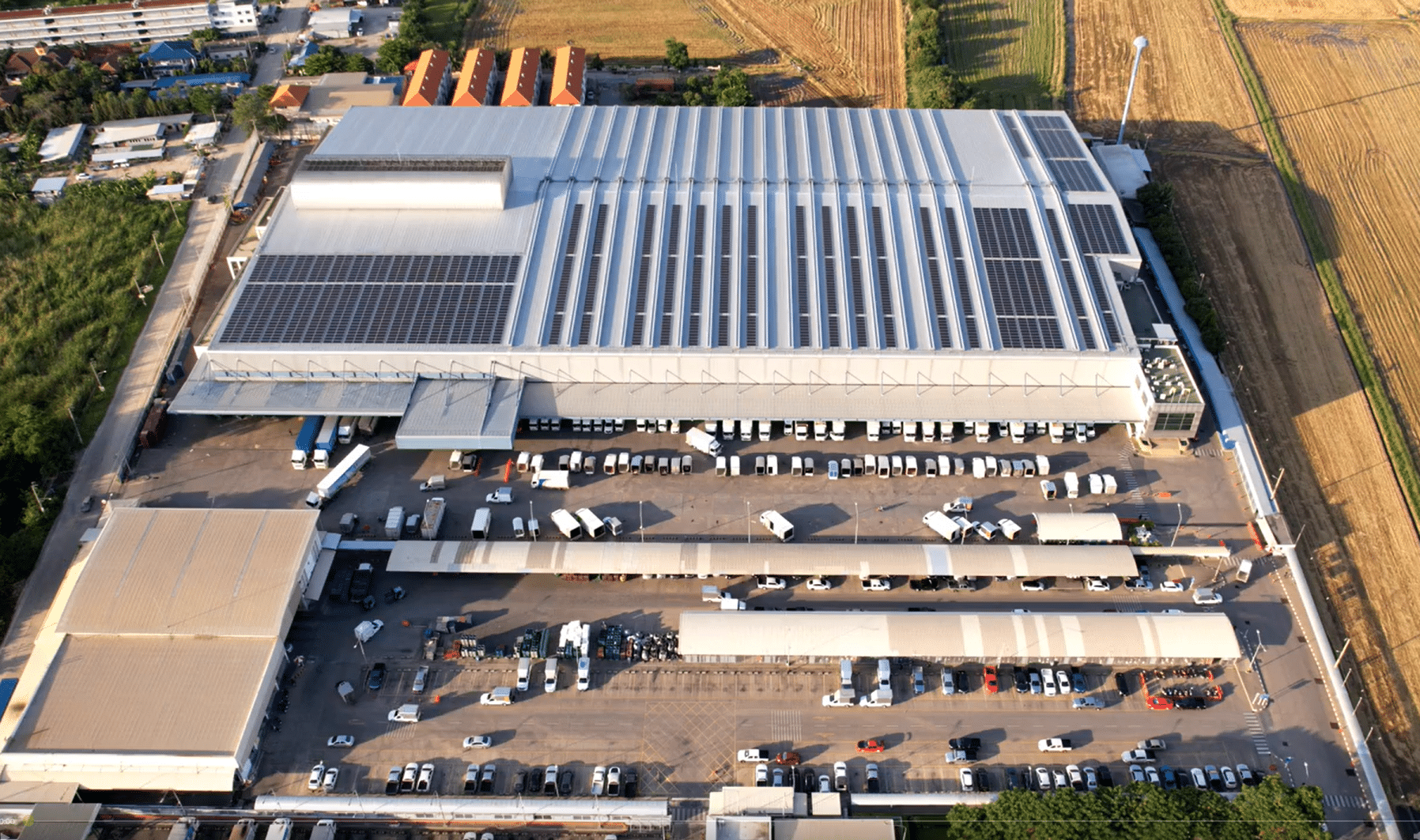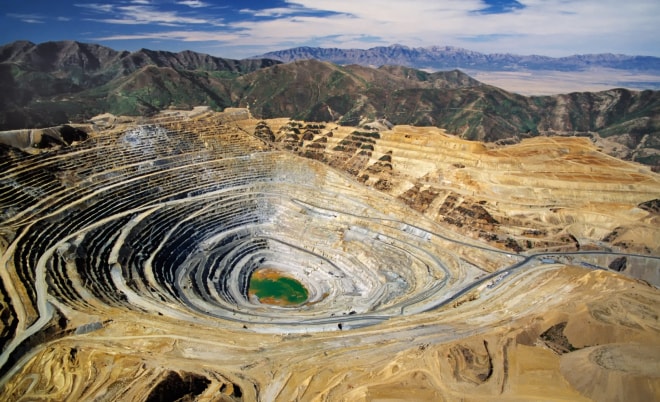$1.7 billion: The FTA Low or No Emission Vehicle Program
It’s that time of year again…. And no, we’re not talking about the Academy Awards. Although, these entries are flying in again, and fast! Transit agencies across the U.S. are competing for the FTA’s Low or No Emissions Vehicle funding. Ambitions run high, with nearly $1.7 billion in Fiscal Year 2023 to support state and local efforts to reach ambitious net-zero emission goals and push back against climate change. This program enables the purchasing and leasing of zero- and low-emission transit vehicles as well as the acquisition, construction, and leasing of required supporting infrastructure and facilities to reach ambitious net-zero emission goals and push back against climate change.
Eligible projects include:
- Purchasing or leasing low- or no-emission buses
- Acquiring low- or no-emission buses with a leased power source
- Constructing or leasing facilities and related equipment (including intelligent technology and software) for low- or no-emission buses
- Constructing new public transportation facilities to accommodate low- or no-emission buses
- Rehabilitating or improving existing public transportation facilities to accommodate low- or no-emission buses
- Additionally 0.5% of a request may be for workforce development training and an additional 0.5% may be for training at the National Transit Institute (NTI).
A distinct edge with the right partner(s)
The transportation industry must rise to meet decarbonization, but transit-electrification projects are complex. Most projects will involve retrofitting existing facilities that were designed to service diesel buses with the extensive charging, electrical and fueling infrastructure needed for zero-emission buses. The time and cost associated with infrastructure projects is not linear to the number of buses being transitioned each year – it can be exponential. The utility may need years and many tens of millions of dollars to build the capacity needed to power your fleet – and the ongoing cost of electricity will be subject to rate increases and demand charges that are unpredictable today. Add to the mix the increasing number of utility outages happening across the US, and reliable, resilient zero-emission vehicle fueling infrastructure becomes essential to your transit agency’s service obligations.
One of the most overlooked scope items in Low-No applications is the combined charging and energy infrastructure needed to support the increase in power needed to charge all electric fleet, while ensuring that power is sustainable and reliable. Rolling out a shiny, new fleet of EV buses is only the first step — albeit an impressive one given the hurdles of extra cost, procurement challenges, and acquiring space for charging depots. But building out the right electrification infrastructure to support the EV fleet is where well-intentioned organizations face the biggest roadblocks. What good is the EV fleet if grid capacity cannot support it? So how can transit agencies make a measurable progress towards their goals — now? The answer: microgrids.
Microgrid-enabled EV infrastructure, like Montgomery County Maryland’s Brookville Smart Energy Bus Depot, offers the ability to substantially reduce the carbon footprint while ensuring reliability and resilience to charge electric vehicles, even in the event of a grid outage. Pitching an integrated charging and energy infrastructure solution, with a proven energy and sustainability partner could be the element to make FTA submissions stand out.
AlphaStruxure: A trusted partner for FTA grants
FTA allows Low-No applicants to list project partners in their application that can be contracted to provide infrastructure and services to complete the scope of the project. Doing so can allow transit agencies to bypass the formal procurement process to deliver projects faster.
Through its Public-Private Partnership approach, AlphaStruxure can also deploy capital as matching funds to complete grant-funded projects, or in lieu of funds for grants not received for ZEV related projects. Low-No submissions to the FTA will be distinguished by foresight, contingency, and an eye on what works. AlphaStruxure underscores those traits with its EV fleet charging, sustainable infrastructures, and partners that lead the way in EV fleet reliability.
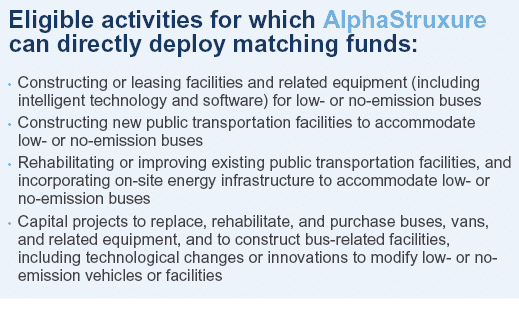
Agencies using an innovative Energy as a Service (EaaS) business model in their entries can further discern themselves with a high-efficiency approach to footprint reduction. Streamlined for local energy systems, microgrid models like AlphaStruxure’s EaaS help zero-emission projects get off the ground faster, avoiding delays that could put funding awards at risk.
FTA Low or No Emissions Vehicle applications are due April 13th, 2023
AlphaStruxure can lend some insight on how to include energy and charging infrastructure in your Lo-No application, develop a competitive project scope, or work with you to include a partner letter for your application. Email us at info@alphastruxure.com.

